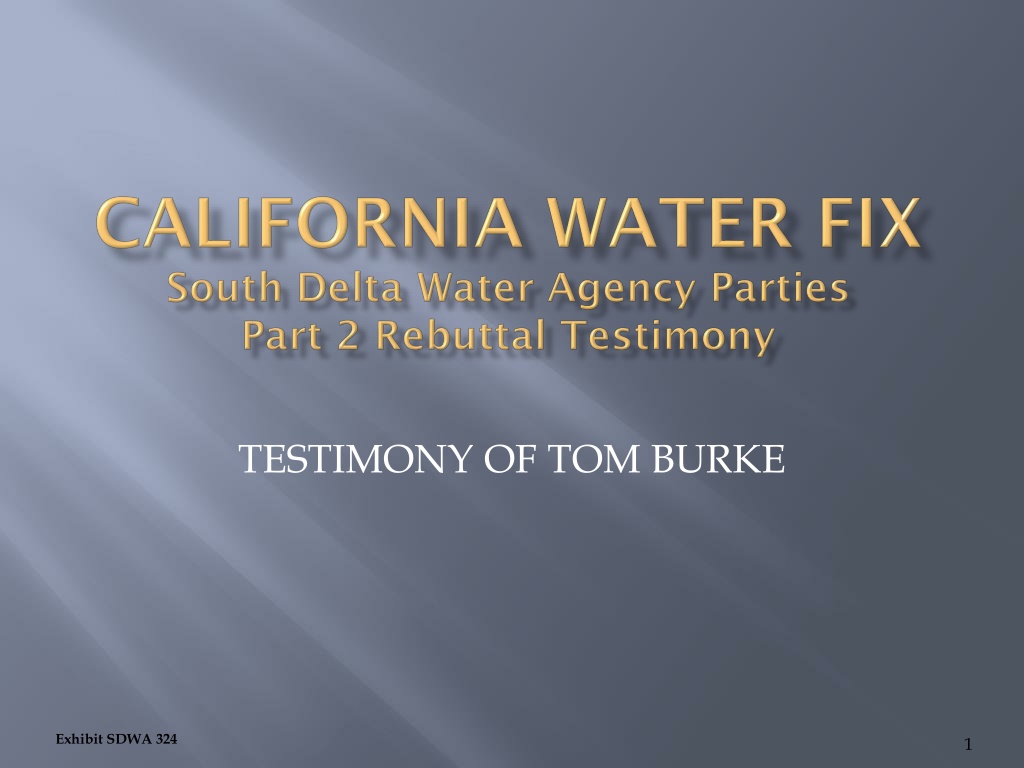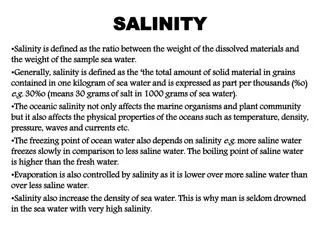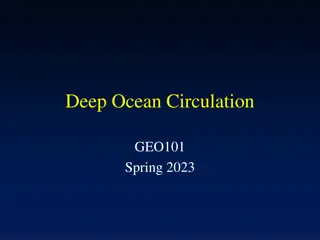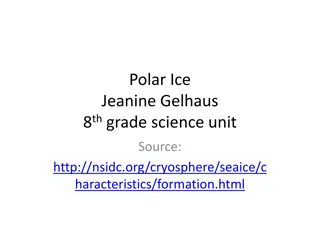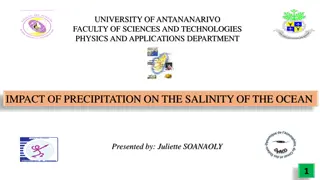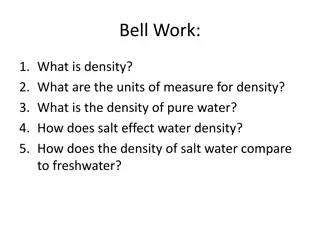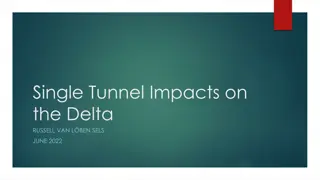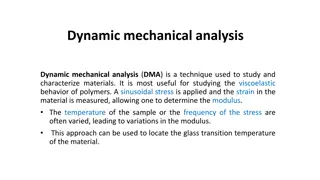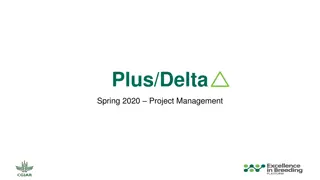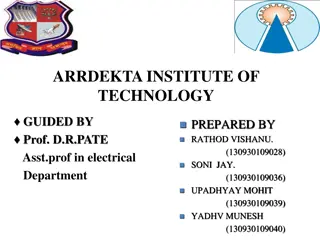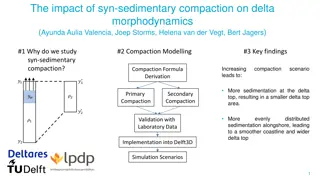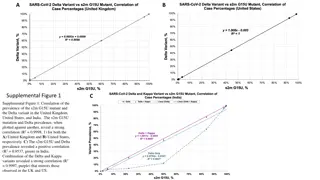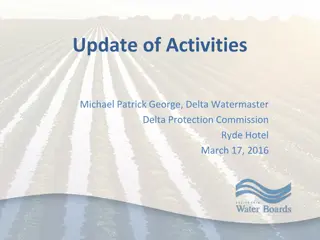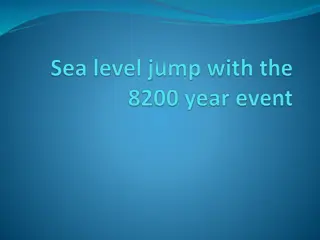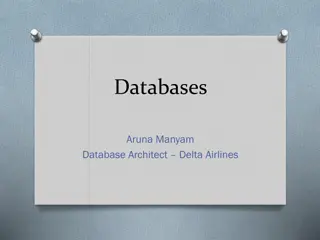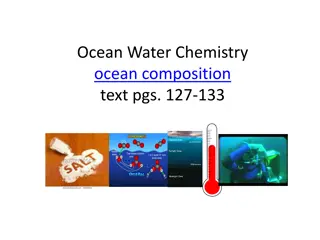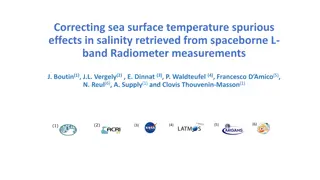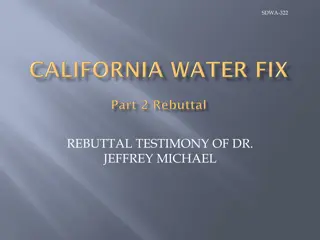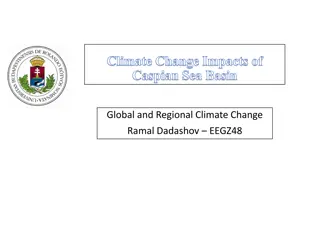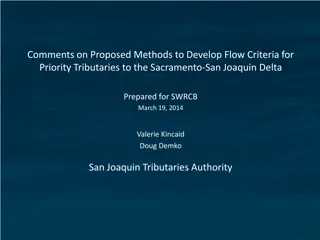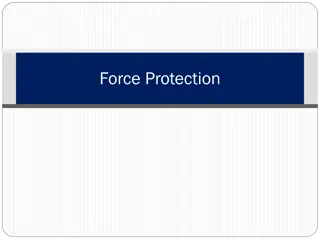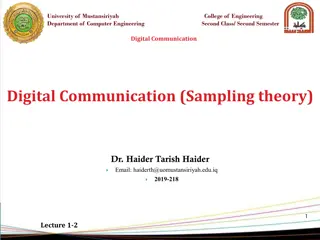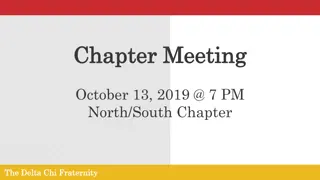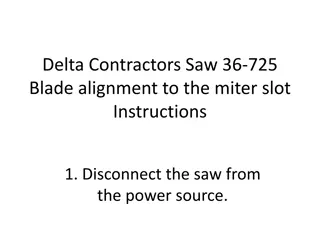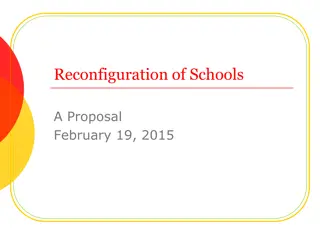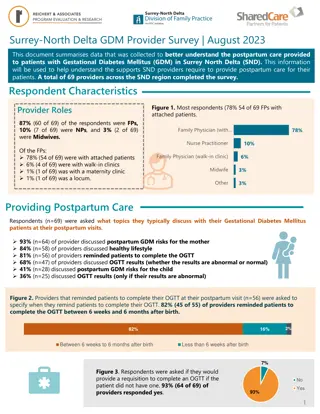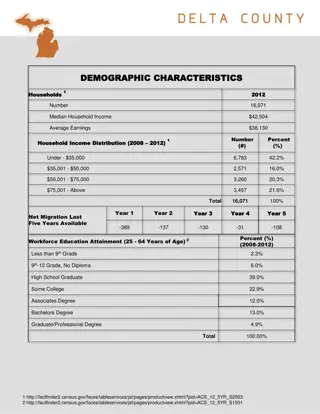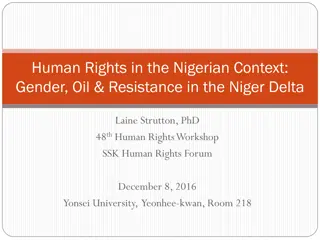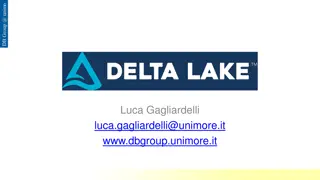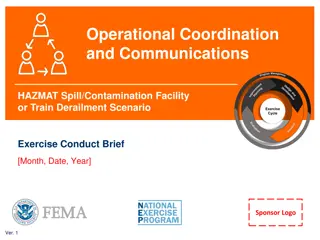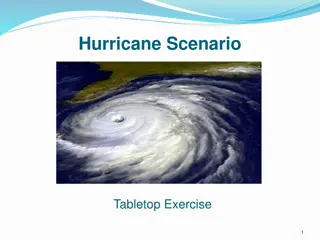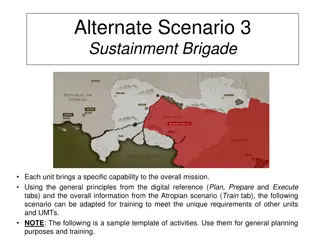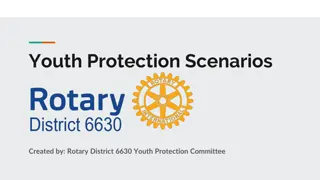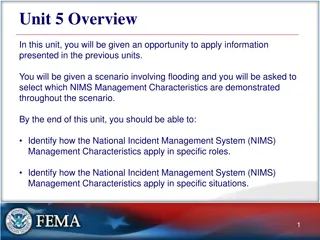Analysis of CWF.H3+ Scenario Impacts on Delta Salinity
The testimony of Tom Burke presents concerns regarding the significant impacts of the CWF.H3+ scenario on salinity in the south and central delta. Issues such as inaccuracies in the DSM2 model, non-compliance with D-1641 requirements, and changes in water levels and flow patterns are highlighted. Evaluations on salinity change, channel geometry, compliance, and the Sacramento River's cooling capacity are discussed, emphasizing the need for accurate modeling and compliance measures to mitigate adverse effects.
Download Presentation

Please find below an Image/Link to download the presentation.
The content on the website is provided AS IS for your information and personal use only. It may not be sold, licensed, or shared on other websites without obtaining consent from the author. Download presentation by click this link. If you encounter any issues during the download, it is possible that the publisher has removed the file from their server.
E N D
Presentation Transcript
TESTIMONY OF TOM BURKE Exhibit SDWA 324 1
The CWF H3+ scenario will have significant impacts on the salinity in the south and central delta. 1. The dsm2 model does not accurately reflect the existing channel geometry for significant portions of the south delta channels. That error in geometry will result in gravely erroneous results 2. The most recent version of the DSM2 model should be used in the CWF analysis and evaluation. 3. The existing NAA does not comply with the d-1641 requirements at the Old River at Tracy compliance point. With an expected increase in salinity for CWF H3+ , the inability to comply with D-1641 at this compliance point is exacerbated. 4. Exhibit SDWA 324 2
The project CFW H3+ scenario results in an increase in reverse flows for old and middle rivers. The cwf h3+ scenario results in a significant reduction in water levels in Old and Middle Rivers. This reduction severely impacts areas of those channels that are already much shallower than predicted in the DSM2 model. The DSM2 hydrodynamic model can be appropriately used to evaluate flow, stage, and water quality data on a time step as short as 15-minutes. Time steps shorter than 15 minutes were investigated by DWR, but they found that the 15-minute time step provided the best balance between accuracy and computational efficiency. There is evidence to indicate that the Sacramento river may not be in temperature equilibrium with the air temperature. This could impact the delta downstream of the NDD s. Exhibit SDWA 324 3
Based on Analysis Performed in Part 1 and Part 2 Conducted New Analyses on Existing Data. Evaluated Petitioners Model Output For The CWF H3+ Scenario Exhibit SDWA 324 4
Evaluated the Change in Salinity from the CWF H3+ Scenario Evaluated the Difference Between the Channel Geometry in DSM2 and the Actual Channel Geometry. Use Of DSM2 To Predict Actual Values, Or Just Use in A Comparative Mode. Exhibit SDWA 324 5
Evaluated D-1641 Compliance in The South Delta Evaluated The Increase in the Frequency of Reverse Flow in Old and Middle Rivers. Evaluated the Change in Water Level In The South Delta For B1, B2, and CWF H3+ Exhibit SDWA 324 6
Evaluated the ability for the Sacramento River To Provide Cool Water To The Delta Exhibit SDWA 324 7
Old River At Tracy: Difference Between The CWF H3+ and NAA 300 250 Series1 200 150 Salinity (uS/cm) 100 50 0 -50 -100 10/1/86 12/1/86 2/1/87 4/1/87 6/1/87 8/1/87 10/1/87 Date Exhibit SDWA 324 13
Old River At Tracy: Difference Between The CWF H3+ and NAA 250 200 WY 1996 Wet Water Year 150 100 50 Salinity (uS/cm) 0 -50 -100 -150 -200 -250 Date Exhibit SDWA 324 14
Old River At Tracy: Difference Between The CWF H3+ and NAA 250 WY 1973 Above Normal Water Year 200 150 100 50 Salinity (uS/cm) 0 -50 -100 -150 Oct-72 Nov-72 Dec-72 Jan-73 Feb-73 Mar-73 Apr-73 May-73 Jun-73 Jul-73 Aug-73 Sep-73 Oct-73 Date Exhibit SDWA 324 15
Evaluated Data At Freeport Gaging Station Flow Data Water Temperature Evaluated Air Temperature At Sacramento State University Assessed The Potential For Equilibrium Conditions To Exist Exhibit SDWA 324 26
The CWF H3+ does not comply with the water quality objectives of D-1641 under CWF H3+, the project will be out of compliance more often, and to a greater degree. 1. The CWF H3+ will result in an increase in the number of reverse flows in Old and Middle River. Analysis of the petitioners DSM2 output shows a 22% increase in reverse flows on Old River at Tracy for the CWF H3+ over the NAA. 2. Based on the petitioners modeling, the CWF H3+ will result in an increase in salinity for all locations evaluated in the south delta, except for the Sn Joaquin River. 3. The DSM2 model has some very inaccurate representations of the channel geometry in the South Delta. The error in geometry is so bad in the middle river as to render any modeling results completely inaccurate. 4. Exhibit SDWA 324 30
The CWF H3+ will result in significant reductions in water level in rivers in the South Delta. This reduction in water level can impact habitat, ability to irrigate, and water quality. 5. Using the DSM2 model to evaluate different scenarios on a 15-minute time step, is not only appropriate, but is using the DSM2 model the way it was designed to be used. This 15-minute data can be averaged over longer periods, but the longer the period that that you use to average the data, the more detail you lose in the model response. 6. The assumption that the Sacramento River is in thermal equilibrium with the air temperature may not be correct. Thus, removing this cooler water through the NDD s may have downstream impacts. 7. Exhibit SDWA 324 31
